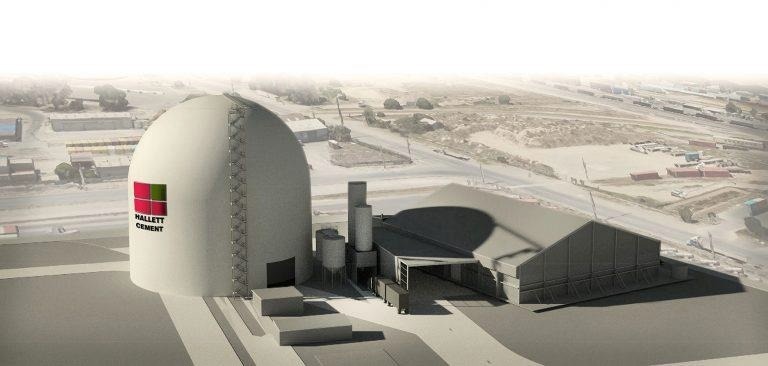Hallett Group is cementing its intention to deliver a greener future for South Australia.

Image Credit: Hallett Group
The first sign of progress saw Port Adelaide’s Inner Harbour skyline change this morning with the erection of a 42-metre (almost 20 stories) tall Domesilo as the cornerstone of Hallett’s Green Cement Distribution Hub.
It is the first large concrete Domesilo in Australia and the world’s first large volume drive-through Domesilo facility.
In conjunction with Flinders Port Holdings, Hallett Group is upgrading the existing wharf at Berth 25 to facilitate the project. The upgraded wharf will be a common-user berth increasing import and export capacity within the Inner Harbour, Port Adelaide precinct. The upgraded berth will service vessels up to an overall length of 185 metres.
The cement facility will consist of a 52,000-ton cement storage dome, 15,000-ton flexible supplementary cementitious material (SCM) storage shed and state-of-the-art on-demand green cement blending and distribution function. The on-demand cement blending will accelerate reductions in embodied carbon in concrete (concrete is the highest volume construction material used globally).
The environmental performance of the Hallett cement facility will herald a new chapter in bulk cement supply to the Adelaide construction market. The facility will be free of airborne emissions and located in the Inner Harbour east side industrial area.
Manufacturing locally and with existing South Australian material reserves, import and export flexibility, Hallett plans to provide the market with at least 30 million tons of SCMs over the next 20 years and beyond.
By using existing renewable energy sources to beneficiate by-product materials, Hallett will manufacture the lowest C02 Portland cement products as compared to anywhere in the world.
Hallett Group is a proud 100% South Australian-owned business and is the largest integrated construction and building material supplier to the local construction industry.
Domesilo Supplementary Information:
The innovative construction technique of inflating a fabric ‘airform’ is followed by the installation of circa 5 cm of rigid foam insulation sprayed onto the inside airform face. Conventional steel reinforcement and sprayed concrete construction is then undertaken also from within the Dome to build the structural walls and roof of the Dome.
The Port Adelaide Domesilo and foundations will use approximately 17,000 tonnes of concrete and 2,000 tonnes of steel reinforcement.
Video Credit: Hallett Group